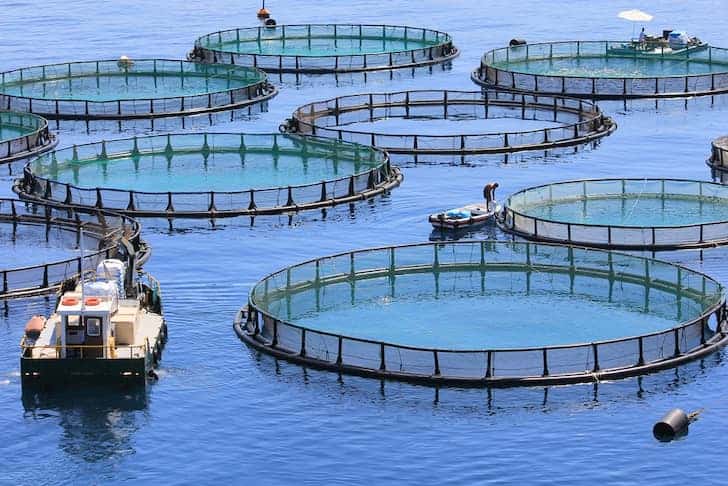Since about 71% of the earth’s surface is covered with water, humans have realized its importance as a resource.
For this reason, one of the areas heavily exploited regarding the use of water as a resource is aquaculture, especially in the production of food as opposed to using terrestrial land.
Aquaculture is the process of rearing, breeding and harvesting of aquatic species, both animals and plants, in controlled aquatic environments like oceans, lakes, rivers, ponds and streams.
Aquaculture serves different purposes, including food production, restoration of threatened and endangered species populations, wild stock population enhancement, the building of aquariums, and fish cultures and habitat restoration.
Here are the various types of aquaculture, as well as their importance.
According to Wikipedia,
“Aquaculture (less commonly spelled aquiculture), also known as aquafarming, is the farming of fish, crustaceans, mollusks, aquatic plants, algae, and other organisms.
Aquaculture involves cultivating freshwater and saltwater populations under controlled conditions and can be contrasted with commercial fishing, which is the harvesting of wild fish. Mariculture refers to aquaculture practiced in marine environments and underwater habitats.”
Types of Aquaculture
There are different types of aquaculture –
I. Depending on Hydrobiological Features
II. Depending on the Motive of Farming
III. Depending on Special Operational Techniques
Various types of cultural practices are carried out in each of these divisions. Some have been discussed here.
1. Mariculture
Mariculture is aquaculture that involves the use of seawater. It can either be done next to an ocean, with a sectioned-off part of the ocean, or in ponds separate from the ocean but containing seawater all the same. The organisms bred here range from mollusks to seafood options like prawns, shellfish, and even seaweed.
Growing plants like seaweed are also part of mariculture. These sea plant and animal species find many uses in manufacturing industries, such as in cosmetics and jewelry, where collagen from seaweed is used to make facial creams. Pearls are picked from mollusks and made into fashion items.
2. Fish Farming
Fish farming is the most common type of aquaculture. It involves the selective breeding of fish, either in freshwater or seawater, with the purpose of producing a food source for consumption. Fish farming is highly exploited as it allows for the production of a cheap source of protein.
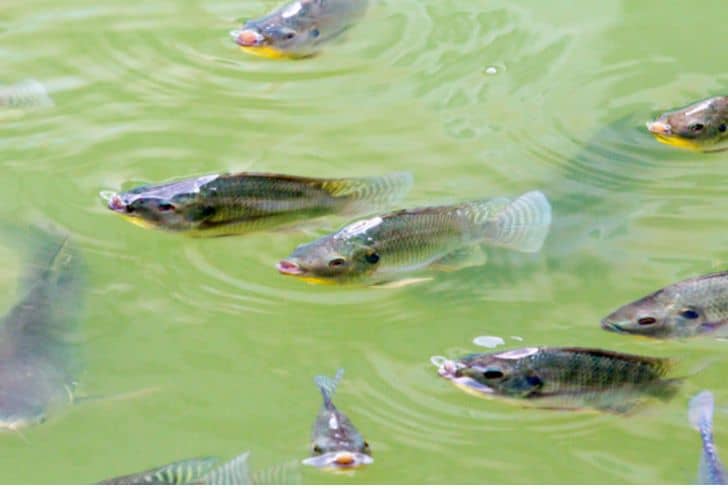
Furthermore, fish farming is easier to do than other kinds of farming as fish are not care-intensive since they only require food and proper water and temperature conditions.
The process is also less land-intensive as the size of ponds required to grow some fish species like tilapia is much smaller than the one needed for the same amount of protein from beef cattle.
3. Algaculture
Algaculture is a type of aquaculture involving the cultivation of algae. Algae are microbial organisms that share animal and plant characteristics. They are sometimes motile like other microbes, but they also contain chloroplasts that make them green and allow them to photosynthesize just like green plants.
However, they have to be grown and harvested in large numbers for economic feasibility. Algae are finding many applications in today’s markets. Exxon Mobile has been making strides in developing them as a new source of energy.
4. Integrated Multi-Trophic Aquaculture(IMTA)
IMTA is an advanced system of aquaculture where different trophic levels are mixed into the system to provide different nutritional needs for each other. Notably, it is an efficient system because it tries to emulate the ecological system in the natural habitat.
The IMTA uses these intertropical transfer of resources to ensure maximum resource utilization by using the waste of larger organisms as food sources for the smaller ones. The practice ensures the nutrients are recycled, meaning the process is less wasteful and produces more products.
5. Inland Pond Culture
This usually involves inland artificial ponds of about 20 acres in size and about 6-8ft deep. It is common to see aeration systems connected to the pond to introduce air into the ponds. This enhances the supply of oxygen and also reduces ice formation in the winter season.
In China, over 75% of the farmed freshwater fish are produced in constructed ponds, and nearly all of the farmed catfish are raised in ponds in the U.S.
6. Recirculating Systems
This involves a closed set of chambers (units) where fish is kept in one and water treatment is kept in another. It is highly dependent on the power supply, as water must constantly be pumped through the fish chambers.
As water flows through the treatment chamber, particulate matter is filtered out, and air is introduced. This closed system controls the salinity, temperature, oxygen, and anything that can cause harm to the fish.
It is an environmentally friendly system that’s highly efficient as very little new water is introduced to replace water that evaporated. The residue from the filters is also disposed of responsibly.
7. Open-net pen and Cage Systems
Open-net pen and Cage systems are often found offshore and in freshwater lakes. Mesh cages of between 6 and 60 cubic feet (pens) are installed in the water with the fish inside them. With a high concentration of fish in the pens, waste, chemicals, parasites, and diseases are often exchanged in the immediate water environments.
The fish also attract predatory animals (bigger fish), which are often entangled in the nets. This system uses public water; therefore, environmental regulation and some authorization protocols must be respected.
8. Flow-through / Raceway
This is a system made of long units stocked with fish. The units have feeding stations attached to them. Water is diverted from flowing water and fed into the raceway units flowing downstream. Down the end of the unit, waste is collected and disposed of. Raceways are common for culturing trout.
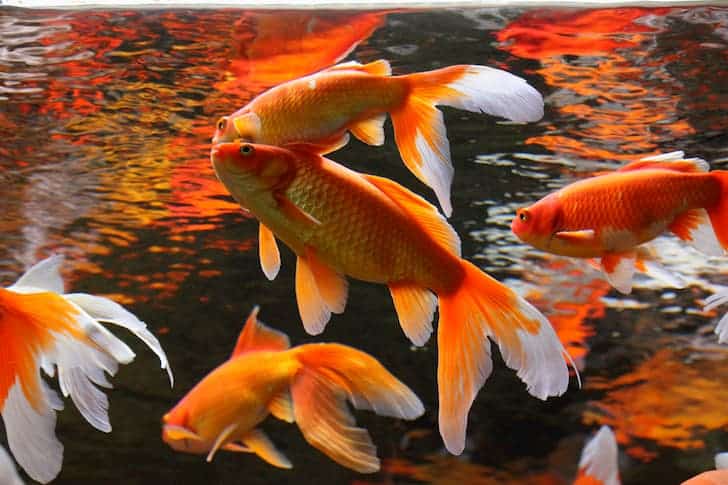
Benefits of Aquaculture
Economic Benefits
1. An Alternative Food Source
Fish and other seafood are good sources of protein. They also have more nutritional value and help add natural oils such as omega-3 fatty acids into a diet.
Also, since the aquatic creatures involved offer white meat, we can safely argue that aquaculture is generally good for the blood as it helps reduce cholesterol levels as opposed to beef’s red meat.
Fish is also easier to keep compared to other meat-producing animals as they are able to convert more feed into protein. Therefore, its overall conversion of a pound of food to a pound of protein makes it cheaper to rear fish as they use the food more efficiently.
2. An Alternative Fuel Source
Algae are slowly being developed into alternative fuel sources by having them produce fuels that can replace contemporary fossil fuels. Algae produce lipids that, if harvested, can be burned as an alternative fuel source whose only by-products would be water when burnt.
Such a breakthrough could ease the world’s dependency on drilled fossil fuels and reduces the price of energy by having it grown instead of drilling petroleum.
Moreover, algae fuel is a cleaner and farmable source of energy, which means it can revolutionize the energy sector and create a more stable economy that avoids the boom-bust nature of oil and replaces it with a more abundant fuel source.
3. Increases Jobs in the Market
Aquaculture increases the number of possible jobs in the market. It provides both new products for a market and creates job opportunities as labor is required to maintain the pools and harvest the organisms grown.
The increase in jobs is mostly realized in third-world countries as aquaculture provides both a food source and an extra source of income to supplement those who live in these regions.
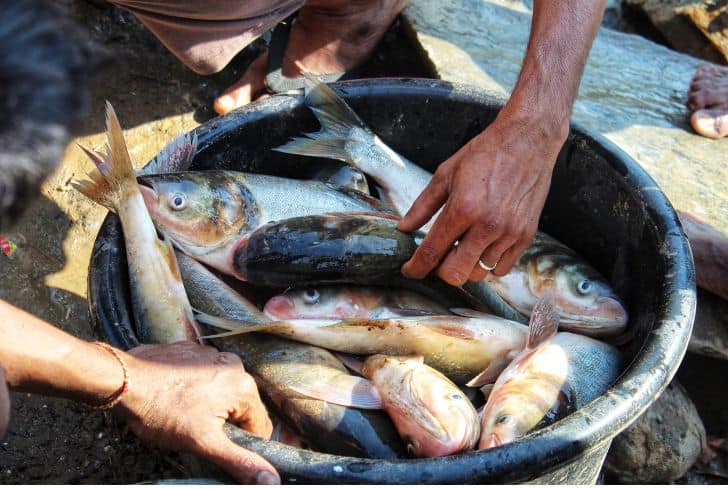
Aquaculture also saves fishermen time as they do not have to spend their days at sea fishing. It allows them free time to pursue other economic activities like engaging in alternative businesses. This boosts entrepreneurship and provides more hiring possibilities and more jobs.
4. Reduces Sea Food Trade Deficit
The seafood trade in America is mainly based on trade from Asia and Europe, with most of it being imported. The resultant balance places a trade deficit on the nation.
Aquaculture would provide a means for reducing this deficit at a lower opportunity cost, as local production would mean that the seafood would be fresher. It would also be cheaper due to reduced transport costs.
Environmental Benefits
1. Creates a Barrier Against Pollution With Mollusc and Seaweed
Mollusks are filter feeders, while seaweed acts a lot like the grass of the sea. Both these organisms sift the water that flows through them as brought in by the current and clean the water. This provides a buffer region that protects the rest of the sea from pollution from the land, specifically from activities that disturb the sea bed and raise dust.
Also, the economic benefits of mollusks and seaweed can create more pressure on governments to protect their habitats as they serve economic importance. The financial benefits realized provide an incentive for the government to protect the seas to protect seafood revenue.
2. Reduces Fishing Pressure on Wild Stock
The practice of aquaculture allows for alternative sources of food instead of fishing the same species in their natural habitats. Population numbers of some wild stocks of some species are in danger of depleting due to overfishing and uncontrolled exploitation. The use of unsustainable fishing methods, such as bottom trawlers, is also reduced.
Aquaculture provides an alternative by allowing farmers to breed those same species in captivity and allow the wild populations to revitalize. The incentive of less labor for more gains pushes fishers to convert to fish farmers and make even more profit than before.
It also allows the control of the supply of the fish in the market, giving them the ability to create surplus stock or reduce their production to reap the best profits available.
3. Low Environmental Impact
Studies conducted by NOAA indicate aquaculture poses a low risk to the environment. The impact is mostly local and temporary. In some cases, aquaculture can benefit the environment. Where filter-feeding shellfish, such as oysters, are cultured in-situ, water quality in ponds and lakes can improve.
Fish and shellfish can also be farmed using methods that do not harm the environment and that helps meets the growing demand for seafood by supplementing wild harvests.
4. Water Usage
Aquaculture systems often take advantage of harvested runoffs, stormwater, and surface water. This reduces the dependency on other sources of water supply. In addition, ponds maintain soil moisture in their vicinity, thereby conserving natural resources.
Importance of Aquaculture
1. Health Benefit
All over the world, the demand for seafood has increased because people have learned that seafood is healthier and helps fight cardiovascular disease, cancer, Alzheimer’s, and many other major illnesses. Now seafood has become part of regular diets.
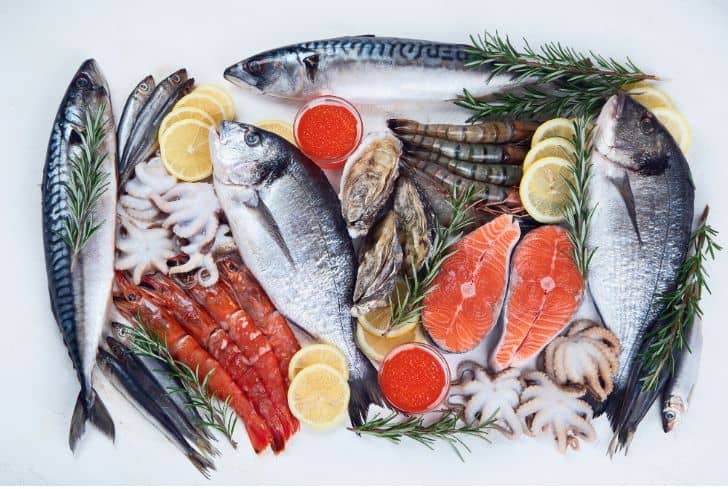
2. Sustainable Use of Sea Resources
Aquaculture provides alternatives for fishing from the sea. An increase in demand for food sources and globalization has led to an increase in fishing. Aquaculture is currently estimated to account for approximately 13 percent (10.2 million tons) of world fish production.
Yet, this has led fishermen to become selfish and overfish the desired or high-demand species. Aquaculture provides both an alternative and an opportunity for wild stocks to replenish over time.
3. Conservation of Biodiversity
Aquacultures also protect biodiversity by reducing the fishing activities on the wild stock in their ecosystems. By providing alternatives to fishing, there is a reduced attack on the wild populations of the various species in the sea. Reduced action of fishing saves the diversity of the aquatic ecosystem from extinction due to overfishing.
4. Increased Efficiency, More Resources for Less Effort
Fish convert feed into body protein more efficiently than cattle or chicken production. It is much more efficient, meaning the fish companies make more food for less feed.
Such efficiency means that less food and energy is used to produce food, meaning that the production process is also cheaper. It saves resources and even allows for more food to be produced, leading to secure reserves and less stress on the environment.
Aquacultures will add to wild seafood and make it cheaper and accessible to all, especially in regions where they depend on imported seafood products.
5. Reduced Environmental Disturbance
By increasing aquaculture, fish farming in specific, there is a reduced need for the fishing of the wild stock. As an outcome, it puts less stress on the ecosystem and equally reduces human interference.
Actions of motorboats and other human influences, such as the removal of viable breeding adult fish, are all stresses put on the aquatic ecosystems, and their discontinuation allows the ecosystem to flourish and find its natural balance.
